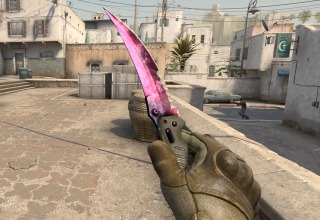Hair loss can have a significant impact on a person’s self-confidence and overall well-being. Thankfully, advances in medical technology have led to effective solutions, with hair transplants being one of the most popular and successful treatments available today. This article explores the process of hair transplant, the before and after aspects, and what individuals can expect from this procedure.
What is Hair Transplant?
Hair transplantation is a surgical procedure that involves moving hair follicles from one part of the body, known as the donor site, to a bald or thinning area, referred to as the recipient site. This procedure is primarily used to treat male pattern baldness but can also be suitable for individuals experiencing hair loss due to injury, burns, or medical conditions.
Types of Hair Transplant Procedures
There are two primary techniques used in hair transplant procedures: Follicular Unit Extraction (FUE) and Follicular Unit Transplantation (FUT).
Follicular Unit Extraction (FUE)
FUE is a minimally invasive procedure where individual hair follicles are extracted from the donor site using a specialized instrument. These follicles are then transplanted to the recipient site, creating a natural-looking hairline. FUE is a preferred method for those who want to avoid linear scarring and have shorter recovery times.
Follicular Unit Transplantation (FUT)
FUT, also known as strip harvesting, involves removing a small strip of scalp from the donor area, typically from the back of the head. This strip is dissected into individual hair follicles, which are then implanted into the recipient site. FUT allows for the transplantation of a larger number of grafts in a single session and is a suitable option for patients with advanced hair loss.
Preparing for Hair Transplant
Before undergoing a hair transplant, several preparations need to be made to ensure a successful procedure and optimal results.
Consultation with a Specialist
It is crucial to consult with a qualified hair transplant specialist, such as Cosmedica, who can evaluate your hair loss condition (is it male pattern baldness or something else?) and recommend the most suitable procedure. During the consultation, the specialist will assess your donor area, discuss your expectations, and address any concerns or questions you may have.
Medical Evaluation
A comprehensive medical evaluation is necessary to identify any underlying health conditions or factors that could affect the success of the procedure.
Lifestyle Changes
In preparation for a hair transplant, certain lifestyle changes may be recommended by the specialist. These changes can help improve the overall health of your hair and enhance the success of the procedure. This may include:
- Quitting smoking: Smoking can negatively impact the healing process and restrict blood flow to the scalp. It is advisable to stop smoking several weeks before and after the procedure.
- Avoiding certain medications: Some medications, such as blood thinners, can increase the risk of bleeding during the surgery. It is important to inform your specialist about any medications you are taking so they can advise you on whether to discontinue them temporarily.
- Maintaining a healthy diet: A balanced diet rich in vitamins, minerals, and proteins can promote hair health. Incorporate foods like fruits, vegetables, lean proteins, and whole grains into your daily meals.
The Hair Transplant Procedure
The actual hair transplant procedure consists of several steps that are performed with precision and care.
Anesthesia
Before the procedure begins, a local anesthesia is administered to numb the scalp. This ensures that the patient remains comfortable and experiences minimal pain or discomfort throughout the surgery.
Harvesting Hair Follicles
In FUE, individual hair follicles are extracted directly from the donor site using a specialized punch tool (source). The donor site is usually the back of the head, where the hair is genetically resistant to balding. The extracted follicles are carefully collected and preserved for the transplantation process.
In FUT, a strip of scalp containing hair follicles is surgically removed from the donor area, according to the NHS website. The wound is then closed using sutures, leaving a linear scar that can be concealed by surrounding hair.
Creating Recipient Sites
The recipient site, where the hair follicles will be transplanted, is prepared by creating tiny incisions or recipient sites. These sites are strategically placed in a manner that mimics the natural hair growth pattern, ensuring a realistic and aesthetically pleasing result.
Implanting Hair Follicles
The harvested hair follicles are delicately implanted into the recipient sites, one by one, using specialized tools. The surgeon’s skill and precision play a vital role in determining the density, angle, and direction of the transplanted hair, ensuring a natural-looking outcome.
Recovery and Aftercare
After the hair transplant procedure, proper recovery and aftercare are essential for optimal results.
Post-Surgery Instructions
The surgeon will provide detailed instructions on how to care for the transplanted area. This may include:
- Avoiding strenuous activities and excessive sweating for a few days
- Keeping the scalp clean and dry
- Taking prescribed medications, such as antibiotics or pain relievers
- Avoiding direct exposure to sunlight and wearing a hat or sunscreen when going outdoors
Managing Discomfort and Swelling
Some discomfort and swelling in the transplanted area are normal after the procedure. The surgeon may recommend pain medication or anti-inflammatory drugs to alleviate these symptoms. Applying cold compresses or ice packs can also help reduce swelling.
Protecting the Transplanted Hair
During the initial recovery phase, it is crucial to handle the transplanted hair with care. Avoid touching or scratching the scalp excessively, as this can dislodge the newly transplanted follicles. Additionally, it is important to follow the recommended hair care routine provided by the specialist.
Results
Understanding the before and after aspects of a hair transplant can help individuals set realistic expectations and be prepared for the changes they will experience.
Immediate Results
After the hair transplant procedure, the transplanted hair follicles may initially appear like small dots or stubble. This is a normal part of the healing process, and the hair will gradually shed within a few weeks.
Shedding of Transplanted Hair
It is common for the transplanted hair to shed within the first few weeks after the procedure. This shedding is a natural part of the hair growth cycle and should not cause concern. The shedding occurs because the transplanted hair follicles enter a resting phase before they start producing new hair.
New Hair Growth
After the shedding phase, new hair growth will gradually begin. The timeline for noticeable hair growth varies from person to person, but most individuals start to see new hair emerging within three to four months after the transplant. Initially, the hair may be thin and fine, but it will continue to grow and thicken over time.
Factors Affecting Hair Transplant Results
Several factors can influence the success and outcome of a hair transplant procedure.
Patient’s Age and Health
Younger patients tend to have better hair transplant results as they generally have stronger and healthier hair follicles. However, a hair transplant can be performed on individuals of various ages, as long as they have a sufficient donor hair supply and are in good overall health.
Surgeon’s Skill and Experience
The skill and experience of the surgeon performing the hair transplant play a crucial role in achieving natural-looking results. It is essential to choose a qualified and experienced hair transplant specialist who has a proven track record of successful procedures.
Hair Transplant Technique
Both FUE and FUT techniques can yield excellent results, but the choice of technique may depend on the patient’s specific needs and the surgeon’s recommendation. Each technique has its advantages and considerations, which should be discussed during the consultation.
Post-Transplant Care
Proper post-transplant care is vital for the success of the procedure. Following the specialist’s instructions regarding medication, hair washing, and protecting the transplanted area is crucial. By adhering to the recommended aftercare routine, patients can optimize their results and minimize the risk of complications.
Conclusion
Hair transplantation is a highly effective solution for individuals experiencing hair loss. Whether using the FUE or FUT technique, the procedure offers natural-looking results that can restore a fuller head of hair and boost self-confidence. By understanding the process, preparing adequately, and following post-transplant care instructions, individuals can achieve successful outcomes and enjoy the transformative benefits of a hair transplant.
Last Updated: July 10, 2023




















